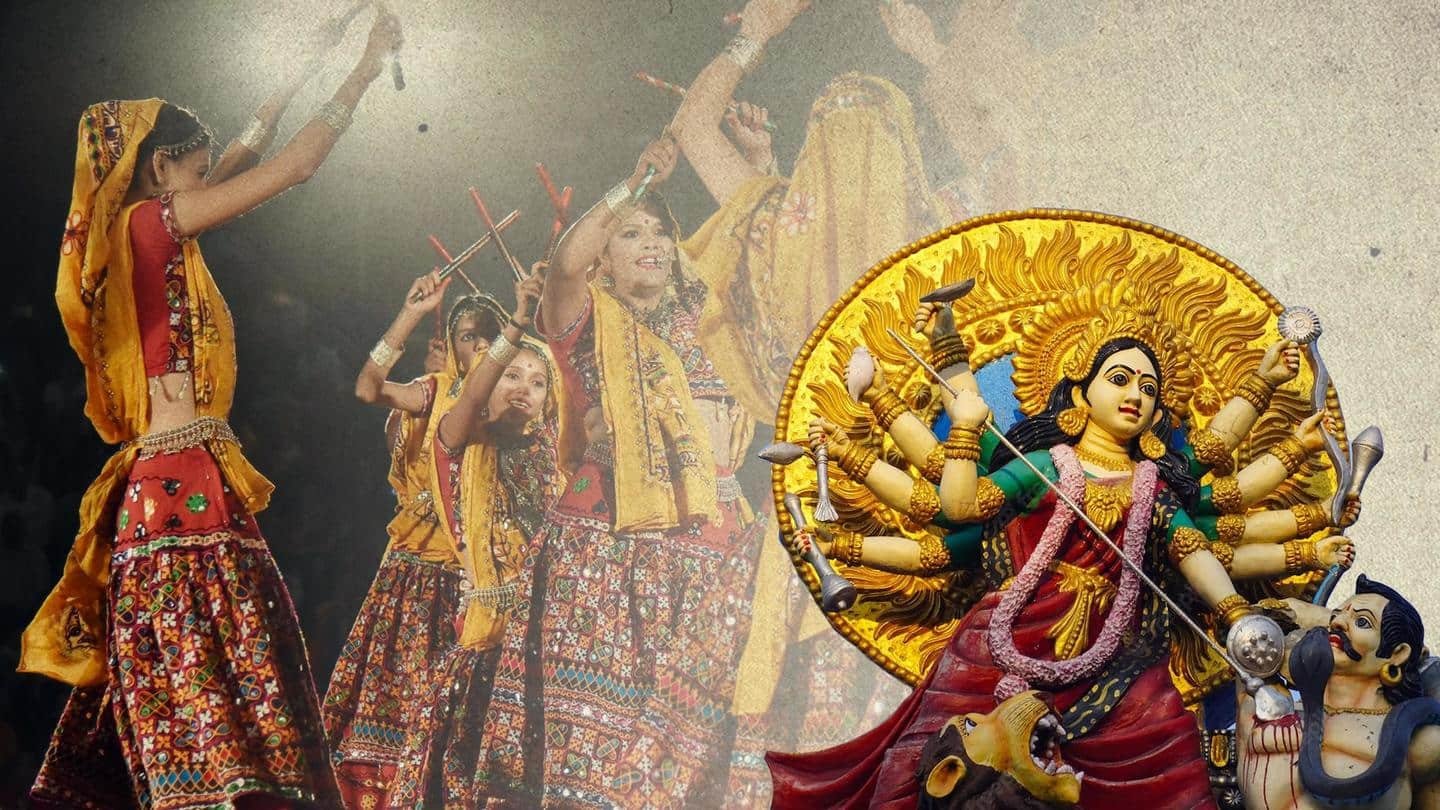
Navratri 2022: History, significance, rituals, and more
What's the story
The grand festive season of India, Navratri, begins today and ends on October 5th this year.
This nine-day celebration is dedicated to the nine incarnations of Goddess Durga.
During the festival, people observe fast, recite hymns, and visit temples to seek blessings.
From its history and significance to celebrations and the culture of fasting, here's everything you should know about Navratri.
History
Navratri celebrates the triumph of good over evil
Navratri honors the defeat of evil king Mahishasura.
As he showcased immense devotion, Lord Brahma blessed him with immortality.
The blessing, however, came with a stipulation - only a woman could defeat him.
The demon began terrorizing people on the earth yet several Gods were unable to defeat him.
Then, Lord Brahma, Lord Vishnu, and Lord Shiva created Goddess Durga, who finally overthrew him.
Significance
People observe fast, pray, and offer bhog for 9 days
During all nine days of this festival, devotees observe a ritualistic fast.
In fact, they follow a strict vegetarian diet and refrain from consuming alcohol and certain spices.
People recite prayers and shlokas dedicated to each of the nine incarnations of the goddess.
Additionally, they decorate their home and the deity's idol, wear new clothing, offer bhog, visit temples, and sing hymns.
Theme color
Nine different colors for each day of Navratri
Each day of Navratri is dedicated to a specific color, and people often dress accordingly.
The colors remain the same but change order each year.
This year, the color for September 26 is white, followed by red, royal blue, yellow, and green for September 27, 28, 29, and 30 respectively.
October 1, 2, 3, and 4 have grey, orange, peacock green, and pink respectively.
Celebrations
People participate in Ramlila, Garba, and Durga Puja
In north India, Ramlila is organized to showcase Lord Ram's victory over Ravana. The effigies of the latter are burnt on Dussehra.
Devotees in the east celebrate Durga Puja and seek the deity's blessings by offering pushpanjali.
In western India, people indulge in garba, a graceful dance form.
South Indians, on the other hand, showcase Golu or Kolu, a display of dolls and figurines.
Information
Significance of the nine colors
White signifies purity, red symbolizes love, royal blue stands for tranquillity, yellow represents festivity and joy, green represents growth and fertility, grey signifies emotional balance, orange denotes positive energy, peacock green symbolizes individuality, and pink reflects affection.